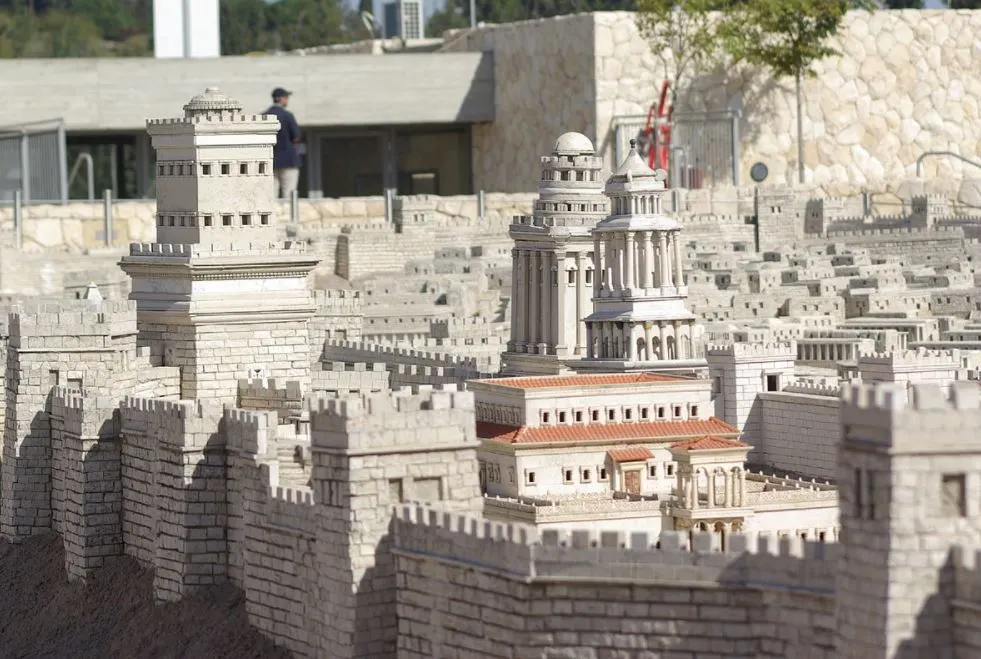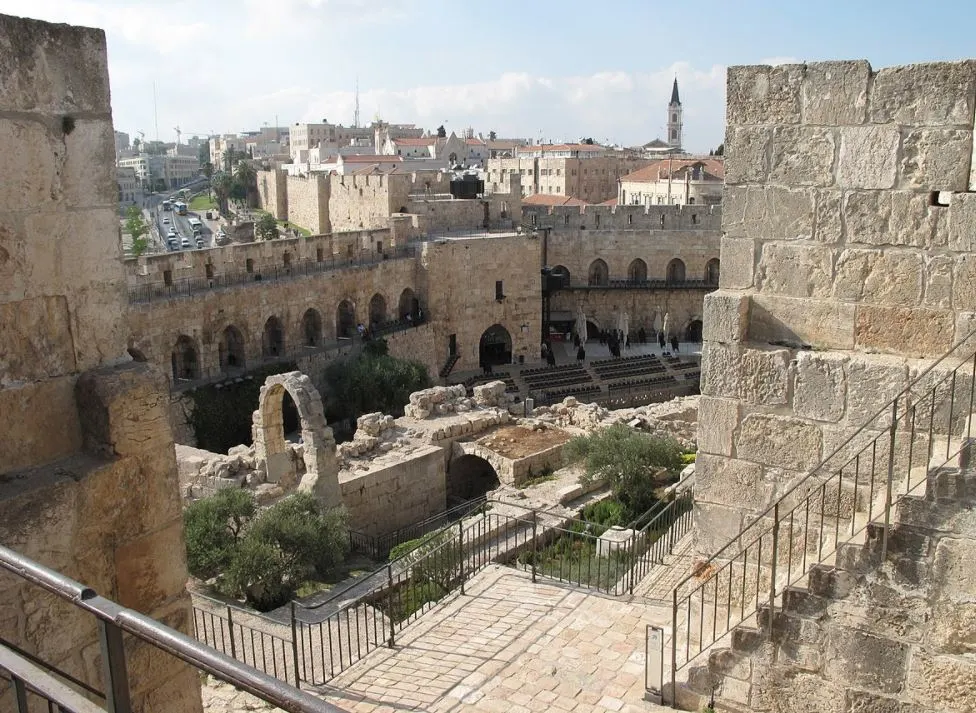A structure that bears the name “The Tower of David” which is located in Jerusalem most definitely sounds pretty old.
Even though the current building in Jerusalem, also referred to as the “Citadel,” wasn’t built in antiquity, a series of buildings on this location predated it.
In this article, we’re going to take a closer look at some of the most interesting facts about this particular tower in Jerusalem, and rest assured, it has a lot of old stories to tell!
1. It’s located near one of the city’s most famous gates
The Tower of David is one of the most fascinating landmarks in Jerusalem for multiple reasons. Even though it’s named after the original tower of the building, the name is used to describe the entire Citadel.
It’s situated next to one of the best-known gates to the Old City of Jerusalem called the Jaffa Gate, one of 7 gates to enter this section of the city. The current version of this gate was built in 1538 and was named after the Port of Jaffa, known for being the location from which the Prophet Jonah started his journey on the sea.
The original towers on this location are believed to date back all the way to the Hasmonean Dynasty of the 2nd century B.C. This dynasty ruled in Judea at the time that the city expanded towards what is today known as the Armenian and Jewish Quarters and Mount Zion.

2. Part of the towers date back to the period of Herod the Great
The original towers, which were built around 150 B.C., were seriously expanded by the great ruler Herod the Great (72-4 B.C.). He probably saw this as an opportunity to strengthen his palace which was located just nearby.
One of the most remarkable facts about the Tower of David is that part of the stones used during this Herodian period are still visible in the tower today.
He also named the towers after his family members. The tallest tower stood an estimated 44 meters (144 feet) tall and was named “Phasael” after his late brother who committed suicide in captivity. Another was named Mariamne after his second wife whom he executed and buried nearby.

Well, that’s the least he could do, right?

3. The tower’s first mention was made in the 5th century A.D.
The name of the tower wasn’t always used for the original main tower of Herod the Great’s citadel. For a period of time during the 19th century, the 17th-century Muslim minaret was named the Tower of David. It wasn’t until the year 1967 that this name was used to define the entire Citadel.
The first time this name actually appeared was somewhere during the 5th century A.D. Remarkably, Herod’s Towers survived the Roman-Judean Wars in the first century A.D.
After all, Jerusalem was sacked by the legions of Vespasian and Titus and the treasures stolen during this sacking ended up being used to build the infamous Colosseum in Rome.
The naming of the tower happened during the Byzantine period. They mistakenly thought that the hill it was built on was Mount Zion and David’s palace according to the Bible originally stood here.

4. The early Muslim citadel was repeatedly destroyed by Crusaders
The Arab conquest of Jerusalem happened in 638 and the Muslims conducted serious renovations and strengthened the Citadel’s defenses.
Even though the structure was strong enough to defend itself from the Crusaders multiple times, the early Muslim version of the Citadel eventually ended up being destroyed.

5. The current layout of the citadel dates back to the 14th century
The structure was destroyed and restored multiple times during the 11th and 12th centuries and eventually ended up being completely rebuilt by a man named Al-Nasir Muhammad ibn Qalawun in 1310, the 9th Bahri Mamluk sultan of Egypt.
This was the period that the Citadel got its current layout. Ottoman leader Suleiman the Magnificent seriously expanded it between 1537 and 1541, and the minaret we can see today was built between 1635 and 1655.

More interesting facts about the Tower of David
6. The Tower of David wasn’t the only name given to the tower in its history. Some other names included the “Citadel Tower” and “Mihrab Dawud” which translates to “David’s Prayer Place.”
7. The ancient version of the Tower was built at around the same time that the so-called “First Wall of Jerusalem” was constructed. This makes this area a literal archaeological treasure chest.

8. Only the foundation of one of the 3 towers built by Herod the Great still stands today. While he named the main tower after his brother and the second tower after his wife, the third tower was named after one of his friends called “Hippicus.”
9. The main reason why the Romans engaged in war with Judea was because of a Judean rebellion led by a man named Simon bar Giora. The rebel leader turned the tower into his private residence during these Roman-Judean Wars.
10. There was a special reason why the Romans didn’t destroy the 3 prominent towers in Jerusalem. Vespasian was aiming to become Roman Emperor and launched a massive propaganda campaign. The towers were used to emphasize the fact that the Roman army, of which he was a general at the time, could breach even the strongest defenses.

11. The Ottoman Muslims installed a small mosque near the southwest corner of the Citadel. This mosque is known as the “Mihrab el-Qal’a ed-Dawood“, which translates to the “Prayer niche of David’s fortress.” This is one of two mosques that ended up being established within the Citadel.
12. The Citadel played an important role during World War I. It ended up being the location that General Edmund Allenby proclaimed the capture of Jerusalem by the British forces in 1917. The Citadel ended up being completely cleaned and renovated during British Rule (1917-1948) and was even opened up for concerts and other events.
13. Following the recapture of Jerusalem by the Muslims in 1948, the music ended and the Citadel was given back its role as a military defense post. It kept this role until 1967.

14. The Six-Day War in 1967 resulted in the Israeli occupation of the Citadel and it ended up being turned into the “Tower of David Museum.” This museum opened in 1989 and allows visitors to learn about the entire history of Jerusalem.
15. The museum has been visited by millions of people worldwide and exhibits a total of over 4,000 items, dating back all the way to the foundation of Jerusalem as a Canaanite city, all the way into modern times.

